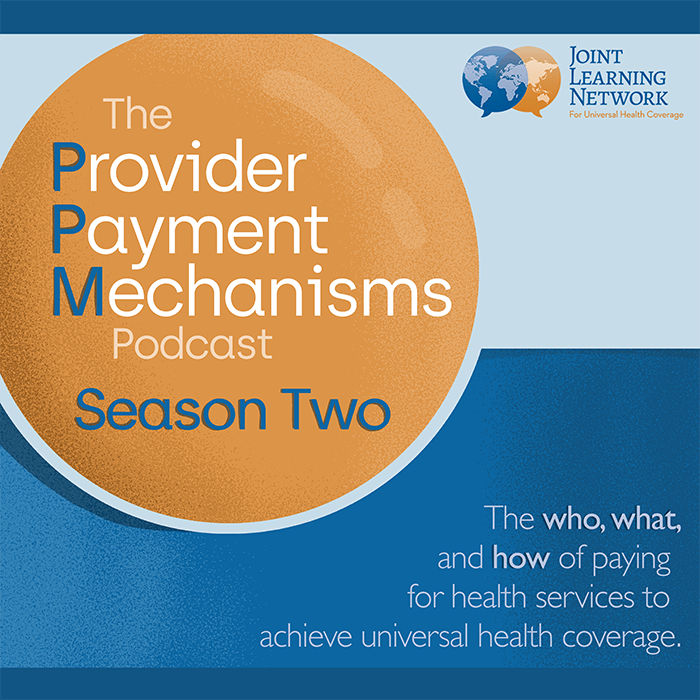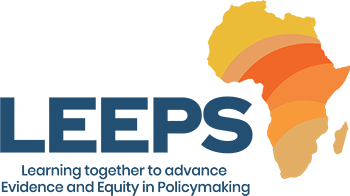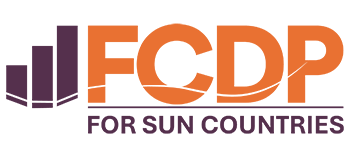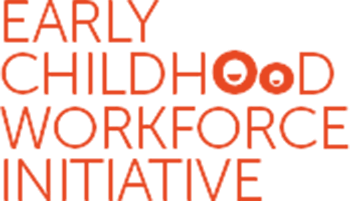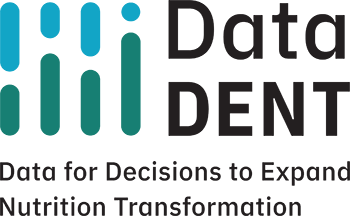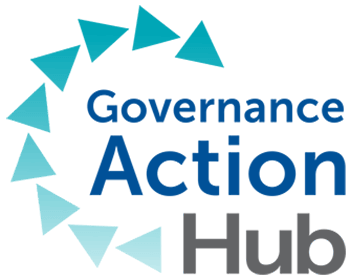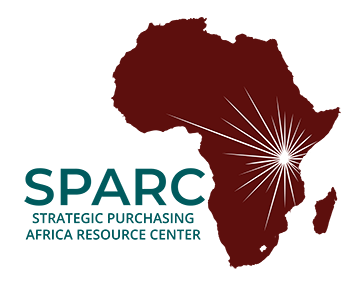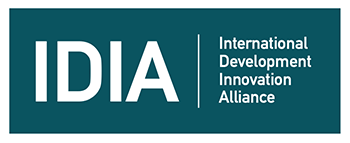Q&A: What is strategic purchasing for health?
Cheryl Cashin and Nathaniel Otoo Reveal Insights From Their Work
[Editor’s Note: In this Q&A, R4D’s Cheryl Cashin, managing director, and Nathaniel Otoo, senior fellow, break down strategic purchasing — one way to get more value for money spent on health. They also provide some examples of strategic purchasing in practice and explain how countries can improve the quality of care and services they provide — and ensure more people have access to them — with limited funds. It sounds lofty, but strategic purchasing is at the heart of a new initiative, the Strategic Purchasing Africa Resource Center (SPARC), which aims to build capacity in sub-Saharan Africa and move countries closer to universal health coverage.]
R4D Insights: Let’s start with the basics. What is strategic purchasing for health?
Cheryl: Let’s begin with something even more basic than that. Let’s first define what’s being purchased and by whom.
Imagine a pregnant woman. She’s enrolled in a national health insurance program that’s run by the government. When she goes to see her doctor for a prenatal check-up, the national health insurance agency (the purchaser) pays the doctor for these services (what’s being purchased). In general, when an agency or institution is buying health services and medicines on behalf of a population, they are doing the purchasing. This can include a national health insurance program or a private insurance company. It can also include a ministry of health — or other purchasers.
When you’re purchasing a lot of services and medicines, you have purchasing power and you can make decisions about which services and medicines you’re buying and from which providers you’re buying. You can also create incentives to motivate providers to be more efficient and to deliver high-quality care, while also directing the population through the health system to use services in the most cost-effective way. That’s strategic purchasing.
Nat: Exactly. With strategic purchasing, the purchaser becomes more aware of what they are doing, and, therefore, they work to employ tools that allow them to do it in the best way possible.
R4D Insights: So if you’re not engaged in strategic purchasing, what are you doing? What is that called?
Cheryl: Purchasing can be carried out in many ways, but we typically distinguish between strategic and passive purchasing.
Passive purchasing has two extremes. At one extreme, the purchaser provides a fixed budget. This is the case in many low- and middle-income countries with public health systems. Public providers receive fixed budgets from the ministry of health.
At the other extreme, the purchaser pays whatever they are billed by the provider. The providers would say these services cost this much, I need to be reimbursed. And there was no effort on the part of insurance companies to manage that, to create incentives to put limits so that providers had to be more efficient. The open-ended payments, just paying the bills, is the other extreme of passive purchasing.
A passive purchaser doesn’t make particular decisions to shape how services are delivered, who’s delivering them, how efficiently inputs are used, and that sort of thing. It’s a missed opportunity.
R4D Insights: What are some expected outcomes of strategic purchasing for health?
Cheryl: The goal of strategic purchasing is to get more value out of money spent on health. And when we say “value” in the context of universal health coverage, we mean a number of things. We mean that a country is able to cover more people with better services, with better financial protection, within available resources.
R4D Insights: How does strategic purchasing help countries move toward universal health coverage?
Cheryl: To quote Joe Kutzin at the World Health Organization, “you can’t spend your way to UHC.” More money in the health system doesn’t automatically translate into better services and improved health outcomes. Countries need to deliberately direct health funds to priority populations, interventions and services, and deliberately create incentives so that money is used equitably and efficiently. If the money is allowed to flow through the system on its own without intervention, it will naturally go to high-cost, tertiary services and wealthy, urban populations. Strategic purchasing ensures that funds are directed to where they will have the most impact on UHC.
I like to think of strategic purchasing as a kind of hidden secret of UHC. It’s not only an enabling factor, but also a benefit. As coverage expands, more people will have access to more and better services, but that also gives more purchasing power to the purchaser as more people are covered. This means there’s more opportunity to shape how resources are used, which gives more opportunity to create incentives and efficiency levers to free up resources to cover people with better services and offer better financial protection. So, strategic purchasing and UHC can become a mutually reinforcing, virtuous cycle.
R4D Insights: Given the benefits, why do some purchasers continue to purchase passively?
Cheryl: The answer is that it’s easy. It’s easy to just make budgets; it’s easy to just pay the bills submitted by providers if you have unlimited resources.
But eventually all systems bump up against resource constraints. And, at some point, you realize you’re not getting as much as you can for the money.
In the systems where providers are paid fixed budgets, we almost always eventually see evidence of low productivity as there are no incentives to see more patients. Facilities can become overcrowded, people are waiting a long time because the turnover is very slow, and quality often deteriorates. There’s nothing in the system that drives providers in the direction of efficiency and quality.
And when it’s fee-for-service, there’s an incentive for providers to do (and charge for) more. There will always be overprovision of services eventually, and costs will escalate.
In both cases, the system will eventually bump up against limited resources and the need to get more out of those resources and to drive better performance from providers and more efficient service delivery and better quality.
The problem is that even where there’s desire to be more strategic, there’s a lack of knowledge about how to do this. There can also be stakeholders who oppose strategic purchasing.
R4D Insights: Can you provide some specific example where purchasers have moved from a passive approach to a more strategic one?
Nat: In Ghana, in the early days of the National Health Insurance Scheme (NHIS) we had a fee-for-service system. For example, within the NHIS you could receive a bill from a health care provider for a cesarean section that included a charge for using 30 latex surgical gloves. But the number would vary from provider to provider, and there was not a standard number of gloves used for the procedure.
We could have continued to pay for whatever number they said they used and remained a passive purchaser, but instead we began to ask: What is a reasonable number of gloves to use for a cesarean, or any other surgery? Then we prescribed what was allowable based on the information and evidence gathered on performing such surgeries. And as a result, we saved money.
Cheryl: At the beginning of my career, I was working in Kazakhstan — where all the providers were public. Each provider received a set budget from the government with no flexibility to allocate funds internally. There were a lot of inefficiencies, sluggishness and low productivity and poor quality of health services. But a local health department decided to shake things up. They defined a primary health care package and paid providers on a per capita basis to deliver the package, with autonomy to manage their funds — all elements of strategic purchasing. After these changes were made I met a rural provider way out on the Kazakh Steppe, where it’s very cold and fuel costs are high. He used his new autonomy to move his clinic to a smaller building to save on fuel so that he could allocate more money to medicine for his patients. So strategic purchasing can be very powerful, even at the level of a small, rural provider.
R4D Insights: You mentioned earlier that there can be stakeholders who oppose strategic purchasing. Why?
Cheryl: This is a very important question and it points to the heart of one of the challenges that is often faced with strategic purchasing.
Strategic purchasing changes the flow of funds in the system and changes who gets what. So, of course, some providers, pharmacies and medical suppliers may think they stand to lose if some money is redirected to other parts of the system through incentives or other purchasing arrangements and they may feel threatened. It’s important to recognize this and to create a process that allows stakeholders to discuss and be involved with the process of change. It does not have to be a zero-sum game. By having good payment systems in place, for example, all providers can learn to be more efficient, understand their costs better, restructure their costs and actually benefit from the payment system. But this requires a lot of dialogue and a lot stakeholder engagement.
R4D Insights: Can you give an example where a stakeholder was opposed to changes, but eventually came around?
Nat: One example is the “gatekeeper system” — in which clients are supposed to first report to a primary health provider and get a referred to a higher-level or specialized facility if necessary. In Ghana, when we started the NHIS, the patient would decide where to seek care from. So, a patient might go to a hospital, which is very expensive, for malaria, which could be easily and more cost-effectively treated by a primary care provider. This higher cost took a bigger than necessary piece of the health budget and left fewer resources for other people.
So we insisted that patients go through a gatekeeper system. Some patients might not be happy, but it’s the right thing to do. And if the patient decides to seek health care from a specialized facility without a referral, they simply have to pay more out of pocket. Their choices shouldn’t negatively impact others in the system.
R4D Insights: Is strategic purchasing widely practiced? Are all countries engaged in some level of strategic purchasing?
Nat: A lot of institutions are using strategic purchasing and they don’t even know that that’s what they’re doing. What’s happening now is that a science has been built around it, actually identifying what works and what does not work. And that is what brings us into the realm of a well-defined process of purchasing health care services.
R4D Insights: How can we build more capacity for strategic purchasing?
Nat: First, we need to build greater awareness about the need for strategic purchasing. It’s also important to gather and share knowledge on this topic. Then we also need to build capacity through training, mentoring and coaching.
The challenges that emerge are different from day to day, and there is no country that is going to get to the end point of strategic purchasing because once they finish one challenge, new challenges emerge.
Cheryl: There are many technical aspects to building strategic purchasing capacity, but a fundamental building block is information — good information systems and ways to use that information to make purchasing decisions. The other capacity that needs to be strengthened is the capacity to understand and navigate political economy challenges and manage the dialogue among potential winners and losers of strategic purchasing approaches.
R4D Insights: Are there a lot of strategic purchasing resources that already exist? Are more needed?
Cheryl: We see typically three categories of resources. First, countries can access direct technical assistance to improve strategic purchasing through global partners such as the World Bank, USAID’s Health Finance and Governance project, etc.
Second, there is also a lot of research available, such as the series of case studies carried out by the RESYST (Resilient and Responsive Health Systems) Consortium on strategic purchasing in low- and middle-income countries. These case studies give a snapshot of what some countries are doing and the results they are getting from strategic purchasing.
Finally, there is a set of resources that has been contributed by the Joint Learning Network — some very practical resources and guides that offer step-by-step guidance for countries to develop some of the strategic purchasing instruments or building blocks, such as the JLN manual on costing health services for provider payment and using data analytics to monitor provider payment systems.
But there is also a gap. Countries often struggle with how to translate research, experience and tools and adapt them to their specific contexts and settings. We hope to address this gap with the creation of the Strategic Purchasing Africa Resource Center (SPARC). SPARC will be housed within a sub-Saharan African institution and serve as a network for people and institutions working on strategic purchasing in the region.
R4D Insights: How will SPARC be different from existing efforts in Africa?
Cheryl: We have a few aspects of our approach that we think are quite different that we’re very excited about.
The first is that we want to recognize and build on the deep expertise that already exists on the continent. SPARC will be creating a network of individuals and institutions in sub-Saharan Africa. This network will be supported by a coaching and mentoring program so that these individuals are prepared to bring their expertise into other country contexts and processes. SPARC will not only develop technical expertise, but also expertise in process facilitation.
Finally, we’re hoping to build a brokering arrangement so the countries who are seeking support to build strategic purchasing capacity and policies are able to access the network of regional experts through demand-driven, co-developed packages of support that are tailored to their needs, whether it’s short-term or longer-term engagement. And we’ll have a feedback loop to share experience back to the network, so we can continuously learn how best to build this capacity, what the needs are and the approaches that work best.
Nat: In addition to that, SPARC will identify successful best practices and use them as points of reference for action and activities in strategic purchasing. But, essentially, what SPARC intends to do is ingrain the idea of efficiency in health care purchasing into all decision-makers in a health system — from the providers to the insurers all the way up to the policymakers — because the decisions they make matter when it comes to ensuring their citizens have access to high-quality, affordable health care.
Photo © Lane Goodman/R4D


